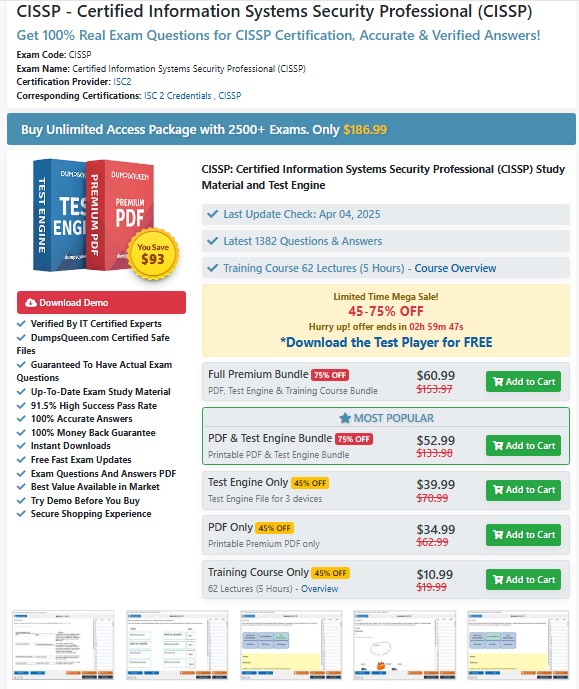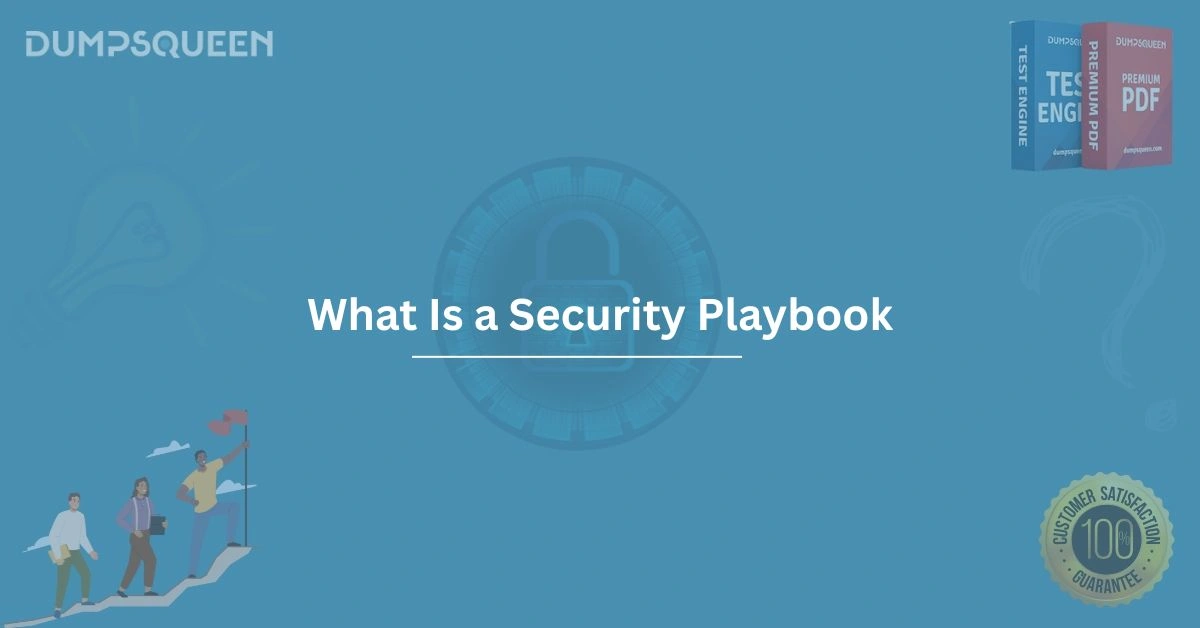Introduction
In today’s rapidly evolving digital landscape, cybersecurity threats are becoming more sophisticated and frequent. Organizations, regardless of size or industry, face the constant challenge of safeguarding their sensitive data, systems, and networks. To combat these threats effectively, businesses need structured, actionable strategies. This is where a security playbook comes into play. A security playbook serves as a critical tool in an organization’s cybersecurity arsenal, providing predefined processes and procedures to respond to security incidents efficiently and consistently. At DumpsQueen, we understand the importance of equipping professionals with the knowledge and resources to strengthen their cybersecurity frameworks. This comprehensive guide explores what a security playbook is, its components, benefits, and how it can transform an organization’s approach to cybersecurity.
Understanding the Concept of a Security Playbook
A security playbook is a detailed, documented guide that outlines the steps an organization should take to identify, respond to, and mitigate cybersecurity incidents. Think of it as a roadmap that ensures a coordinated and effective response to threats such as data breaches, ransomware attacks, phishing attempts, or insider threats. Unlike generic policies or high-level strategies, a security playbook is highly specific, offering step-by-step instructions tailored to particular scenarios.
The primary goal of a security playbook is to reduce response time and minimize damage during a security incident. By providing clear guidelines, it ensures that team members—whether they are cybersecurity experts or non-technical staff—know exactly what to do when a threat arises. At DumpsQueen, we emphasize the importance of well-crafted security playbooks, as they empower organizations to maintain operational continuity even in the face of sophisticated cyberattacks.
The Core Components of a Security Playbook
A well-designed security playbook is structured to address various aspects of incident response. While the exact components may vary depending on the organization’s needs, most playbooks include the following elements:
Incident Identification and Classification
The first step in any security playbook is to define how to identify and classify a security incident. This involves recognizing the signs of a potential threat, such as unusual network activity, unauthorized access attempts, or alerts from security tools. The playbook should specify the criteria for classifying incidents based on their severity, such as low, medium, or high. For example, a phishing email might be classified as a low-severity incident, while a ransomware attack would be considered high-severity. At DumpsQueen, we recommend that organizations integrate automated monitoring tools to enhance their ability to detect incidents early.
Roles and Responsibilities
A critical aspect of a security playbook is defining the roles and responsibilities of team members during an incident. This ensures that everyone knows their tasks and can act swiftly without confusion. For instance, the playbook might designate a security analyst to investigate the incident, a communications officer to notify stakeholders, and an IT administrator to isolate affected systems. By clearly outlining these roles, the playbook fosters accountability and collaboration, which are essential for an effective response.
Step-by-Step Response Procedures
The heart of a security playbook lies in its detailed response procedures. These procedures provide a step-by-step guide for addressing specific types of incidents. For example, in the case of a malware infection, the playbook might instruct the team to isolate the affected device, scan for malicious files, and restore data from backups. Each step should be clear, actionable, and prioritized to ensure a streamlined response. DumpsQueen encourages organizations to customize these procedures based on their unique infrastructure and threat landscape.
Communication Protocols
Effective communication is vital during a security incident. A security playbook should outline how information is shared internally among team members and externally with stakeholders, such as customers, partners, or regulatory authorities. This includes templates for incident notifications, escalation paths for critical issues, and guidelines for maintaining transparency without compromising security. By establishing robust communication protocols, organizations can manage stakeholder expectations and maintain trust.
Recovery and Post-Incident Analysis
Once an incident is resolved, the playbook should guide the organization through the recovery process. This includes restoring affected systems, validating that the threat has been fully mitigated, and implementing measures to prevent recurrence. Additionally, the playbook should include a post-incident analysis phase, where the team reviews the incident to identify lessons learned and areas for improvement. At DumpsQueen, we advocate for continuous improvement, as it strengthens an organization’s resilience against future threats.
The Benefits of Implementing a Security Playbook
Adopting a security playbook offers numerous advantages for organizations looking to enhance their cybersecurity posture. Below, we explore some of the key benefits in detail.
Faster Incident Response
Time is of the essence during a cybersecurity incident. A security playbook enables organizations to respond quickly by providing predefined steps, reducing the need for ad-hoc decision-making. This not only minimizes the impact of the incident but also prevents it from escalating into a larger crisis. For example, a playbook for handling ransomware can help teams isolate affected systems before the malware spreads across the network.
Consistency in Response
In the absence of a playbook, responses to security incidents can vary depending on the team members involved or the circumstances of the incident. This inconsistency can lead to errors or delays. A security playbook ensures that every incident is handled in a standardized manner, regardless of who is responding. This consistency is particularly valuable for organizations with large or distributed teams.
Reduced Risk of Human Error
Cybersecurity incidents are high-pressure situations that can overwhelm even experienced professionals. A security playbook mitigates the risk of human error by providing clear instructions, allowing team members to focus on execution rather than improvisation. At DumpsQueen, we believe that reducing human error is critical to maintaining a secure environment.
Enhanced Training and Preparedness
A security playbook serves as a valuable training tool for new employees and a reference for existing staff. By regularly reviewing and practicing the procedures outlined in the playbook, organizations can ensure that their teams are well-prepared to handle real-world incidents. This proactive approach fosters a culture of cybersecurity awareness and readiness.
Compliance with Regulatory Requirements
Many industries are subject to strict regulatory requirements regarding cybersecurity and incident response. A security playbook helps organizations demonstrate compliance by documenting their processes and ensuring that they align with standards such as GDPR, HIPAA, or PCI-DSS. DumpsQueen provides resources to help organizations align their playbooks with these regulations, ensuring both security and compliance.
How to Create an Effective Security Playbook
Creating a security playbook requires careful planning and collaboration across departments. Below, we outline the key steps to develop a playbook that meets your organization’s needs.
Assess Your Threat Landscape
Start by identifying the most likely threats to your organization, such as phishing, malware, or insider threats. Conduct a risk assessment to understand your vulnerabilities and prioritize the scenarios that require playbooks. For example, a financial institution might prioritize playbooks for fraud detection, while a healthcare provider might focus on protecting patient data.
Collaborate with Stakeholders
Involve key stakeholders, including IT, cybersecurity, legal, and communications teams, in the playbook development process. Their input ensures that the playbook addresses all relevant aspects of incident response, from technical mitigation to regulatory reporting. At DumpsQueen, we recommend forming a cross-functional team to oversee playbook creation.
Document and Test Procedures
Once the playbook is drafted, document each procedure in detail, ensuring that it is easy to understand and follow. Use flowcharts, checklists, or diagrams to enhance clarity. After documentation, test the playbook through tabletop exercises or simulations to identify gaps or inefficiencies. Regular testing ensures that the playbook remains relevant as new threats emerge.
Update Regularly
The cybersecurity landscape is constantly evolving, with new threats and technologies emerging regularly. To remain effective, a security playbook must be updated periodically to reflect changes in the threat landscape, organizational structure, or regulatory requirements. DumpsQueen encourages organizations to review their playbooks at least annually or after significant incidents.
Real-World Applications of Security Playbooks
Security playbooks are used across industries to address a wide range of cybersecurity challenges. For example, in the retail sector, a playbook might outline how to respond to a point-of-sale system breach, including steps to secure payment data and notify affected customers. In the manufacturing industry, a playbook could focus on protecting industrial control systems from ransomware attacks. By tailoring playbooks to specific use cases, organizations can ensure that their responses are both effective and relevant.
At DumpsQueen, we’ve seen firsthand how security playbooks transform incident response. Our resources and training materials help professionals develop playbooks that address real-world scenarios, from data breaches to distributed denial-of-service (DDoS) attacks. By leveraging our expertise, organizations can build playbooks that not only mitigate risks but also enhance their overall security posture.
Conclusion
In an era where cyber threats are a constant reality, a security playbook is an indispensable tool for organizations seeking to protect their assets and maintain operational resilience. By providing clear, actionable guidance, a security playbook ensures that teams can respond to incidents swiftly, consistently, and effectively. From identifying threats to recovering systems and complying with regulations, a well-crafted playbook covers every aspect of incident response. At DumpsQueen, we are committed to empowering professionals with the knowledge and tools to build robust security playbooks that address today’s challenges and prepare for tomorrow’s threats. Whether you’re a cybersecurity novice or a seasoned expert, understanding and implementing security playbooks is a critical step toward a more secure future.
Free Sample Questions
Question 1: What is the primary purpose of a security playbook?
A) To replace cybersecurity software
B) To provide step-by-step instructions for responding to security incidents
C) To enforce company-wide password policies
D) To monitor employee activities
Answer: B) To provide step-by-step instructions for responding to security incidents
Question 2: Which component of a security playbook defines the tasks of team members during an incident?
A) Incident Identification
B) Communication Protocols
C) Roles and Responsibilities
D) Recovery Procedures
Answer: C) Roles and Responsibilities
Question 3: Why should a security playbook be updated regularly?
A) To increase the complexity of procedures
B) To reflect changes in the threat landscape and organizational needs
C) To reduce the number of team members involved
D) To eliminate the need for testing
Answer: B) To reflect changes in the threat landscape and organizational needs
Question 4: How does a security playbook help with regulatory compliance?
A) By documenting processes that align with industry standards
B) By replacing the need for audits
C) By automating incident detection
D) By limiting stakeholder communication
Answer: A) By documenting processes that align with industry standards



